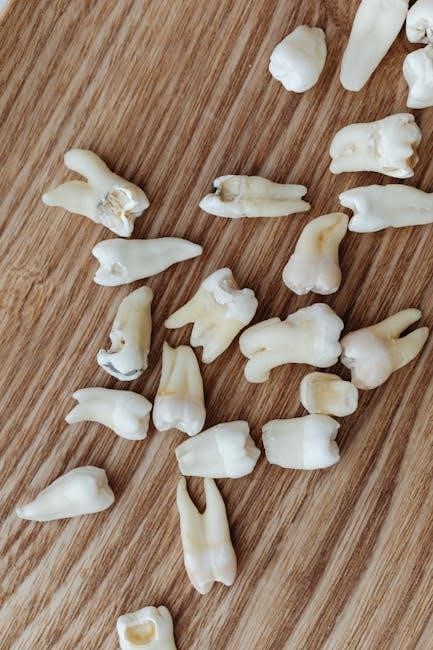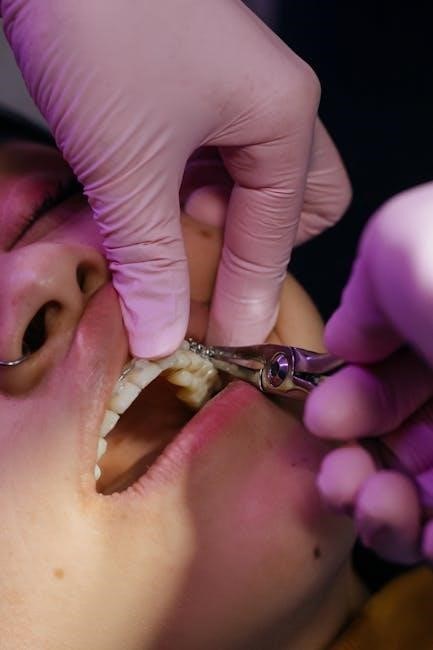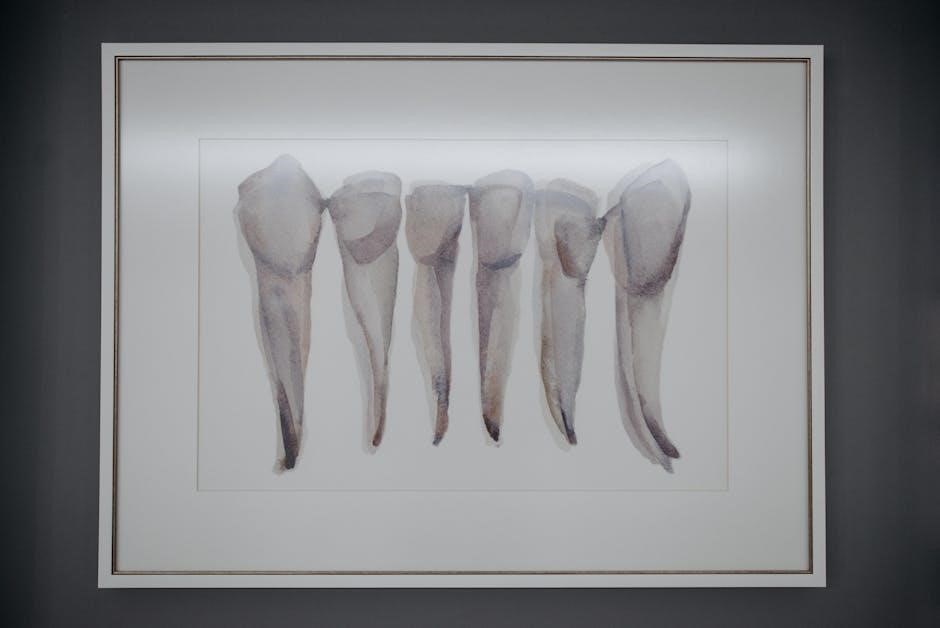
dental extraction post op instructions spanish
Following dental extraction, patients receive post-operative instructions in Spanish to ensure proper healing and minimize complications, using
- step-by-step guidelines
for optimal recovery, every day, all the time, always.
General Information
Patients are advised to follow specific guidelines after a dental extraction to promote healing and prevent complications. The instructions are typically provided in Spanish to cater to a diverse patient population. A
- comprehensive guide
outlines the necessary steps to take after the procedure, including medication intake, dietary restrictions, and oral hygiene practices. It is essential to
- follow the instructions carefully
to ensure a smooth recovery. The guide also covers common issues that may arise, such as bleeding, swelling, and pain, and provides tips on how to manage them. By following the post-operative instructions, patients can minimize the risk of complications and promote optimal healing. The instructions are usually provided in a clear and concise manner, making it easy for patients to understand and follow them. A
step-by-step approach
is often used to explain the necessary steps to take after the procedure.

Oral Hygiene
Oral hygiene is crucial after a dental extraction to prevent infection and promote healing. Patients are advised to brush their teeth gently, avoiding the extraction site, and use a soft-bristled toothbrush. A
- gentle cleaning routine
should be followed, including rinsing with warm salt water to keep the area clean. It is recommended to start brushing teeth 24 hours after the procedure, taking care not to disturb the extraction site. Flossing and using an interdental brush can also be done gently, avoiding the extraction site. Patients should also avoid using a straw or spitting forcefully, as this can dislodge the blood clot. By maintaining good oral hygiene, patients can reduce the risk of complications and promote a smooth recovery. A
regular cleaning routine
should be established to ensure the area remains clean and free of bacteria. This will help the extraction site heal quickly and prevent any potential issues.

Managing Pain and Discomfort
Pain and discomfort are expected after dental extraction, using
- medications
to alleviate symptoms, every day, all the time, always, with a
- follow-up
plan, for optimal relief, and healing.
Pain Management
Pain management is crucial after dental extraction, and patients are advised to follow a specific regimen to alleviate discomfort. Using medications as directed by the dentist is essential, and patients should be aware of the potential side effects. A
- step-by-step guide
is provided to help patients manage their pain effectively, including taking medication at the right time and using cold compresses to reduce swelling. It is also important to note that some patients may experience
- different levels
of pain, and the dentist may recommend alternative pain management options. Additionally, patients should be aware of the importance of
- follow-up appointments
to monitor their progress and adjust their pain management plan as needed. By following these guidelines, patients can ensure a smooth and comfortable recovery after dental extraction, and minimize the risk of complications, with proper pain management, every day.
Bleeding Control
Bleeding control is a critical aspect of post-operative care after dental extraction, and patients are advised to follow specific guidelines to minimize bleeding. The use of
- gauze pads
is recommended to apply pressure to the extraction site, and patients should bite down gently on the gauze for a specified period. Additionally, patients can use
- tea bags
to help control bleeding, as the tannins in the tea can help constrict blood vessels. It is also important for patients to avoid
- certain activities
such as smoking, spitting, and rinsing vigorously, as these can dislodge the blood clot and lead to excessive bleeding. By following these guidelines, patients can effectively control bleeding and promote healing after dental extraction, with proper care and attention to the extraction site, every day, to ensure a smooth recovery. Patients should monitor their bleeding and report any concerns to their dentist.

Additional Instructions

Patients receive extra guidance using
- lists
and tips for smooth recovery, always following specific rules, every day, with care, using online resources, for optimal healing, in a safe manner, at home, easily.
Avoiding Complications
To prevent complications after a dental extraction, patients should follow specific guidelines, using a combination of
- lists
and tips to ensure smooth recovery. It is essential to avoid certain activities, such as smoking, drinking through a straw, and eating hard or spicy foods, which can dislodge the blood clot and lead to dry socket. Patients should also avoid strenuous exercise, bending, or heavy lifting, as these activities can increase blood pressure and cause bleeding. By following these guidelines and using online resources, patients can minimize the risk of complications and promote optimal healing. Additionally, patients should be aware of the signs of complications, such as increased bleeding, swelling, or pain, and seek medical attention immediately if they experience any of these symptoms. This will help prevent further complications and ensure a successful recovery. Regular check-ups with the dentist are also crucial.
Facial Swelling
Facial swelling is a common symptom after a dental extraction, and it can be managed using various techniques, including the application of heat or cold compresses. According to online resources, a warm compress can be applied to the affected area to reduce swelling and promote healing. The compress should be wrapped in a
- cloth
to avoid direct contact with the skin. Patients can also use a damp
- towel
to apply heat to the area. It is essential to follow the instructions provided by the dentist to ensure proper care and minimize the risk of complications. By managing facial swelling effectively, patients can reduce discomfort and promote a smooth recovery. Regular monitoring of the swelling is also crucial, and patients should seek medical attention if the swelling persists or worsens over time. This will help prevent further complications and ensure a successful recovery from the dental extraction.
Using Tea to Control Bleeding
The use of tea to control bleeding after a dental extraction is a recommended technique, as it contains tannins that help to constrict blood vessels and promote clotting. According to online resources, a tea bag can be placed on the affected area to control bleeding, and this method is often used as a last resort if other methods fail; The tannins in the tea help to form a clot and stop the bleeding, and this technique is a simple and effective way to manage post-operative bleeding. Patients can soak a
- tea bag
in hot water, let it cool, and then place it on the affected area to control bleeding. This method is a useful addition to other bleeding control techniques, and it can be used in conjunction with other methods to promote healing and prevent complications. By using tea to control bleeding, patients can reduce the risk of bleeding and promote a smooth recovery.
Emergency Contact
In case of an emergency, patients are advised to contact their dentist or oral surgeon immediately, using the contact information provided to them. According to online resources, patients should not hesitate to reach out if they experience excessive bleeding, severe pain, or other complications. A phone call or visit to the dentist’s office can help to resolve the issue quickly and prevent further complications. Patients can also use
- email
or other forms of communication to contact their dentist, but a phone call is usually the most effective way to get help quickly. It is essential to have a plan in place for emergency situations, and patients should make sure they have their dentist’s contact information readily available. By being prepared and knowing who to contact in case of an emergency, patients can ensure a smooth and successful recovery from their dental extraction procedure. Patients should keep their dentist’s contact information handy at all times.